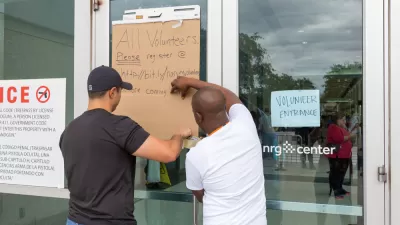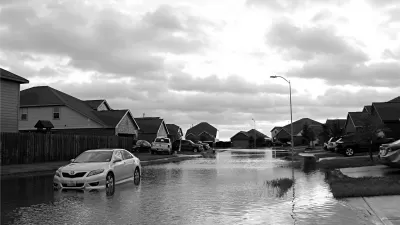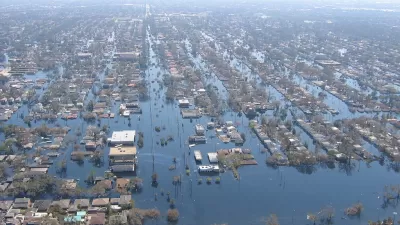How do we disrupt the cycle of rebuilding things exactly as they were before—if slightly hardened—after increasingly powerful weather events?
"Those of us who spent extended time in coastal Mississippi and Louisiana after Hurricane Katrina in 2005 are watching the weather and reading the news with a serious case of Groundhog Day. It’s rescue-recriminate-rebuild-repeat. Over and over again."
"I’m writing this as longer range impacts of Hurricane Harvey in Texas are just beginning to sink in and as another monster hurricane, Irma, has blown out of the Atlantic, into the Caribbean and is headed toward South Florida. We’re going to be grappling with competing narratives about disaster response and resilience for a while. Two suggestions:"
"First, those of us engaged in community and regional planning should keep in mind the core caution in last week’s post by my PlaceMakers partner, Hazel Borys:
'No amount of comprehensive planning or zoning reform can prepare a city for the sort of flood Houston is currently experiencing. An expected 50” of rain in a few days makes this an event that no place in the world is likely to sustain without massive personal and economic impacts.'
"My other suggestion: Let’s pick our battles. Beginning with recognizing the unhelpful aspects of the Groundhog experience and focusing on when and how to insert response strategies — including planning strategies — that show greater promise of making things at least a little better for those in the path of disaster."
Brown goes on with a lengthy analysis of city planning and hurricane response, ending with an encouragement to pick attainable steps toward resilience.
FULL STORY: A Hurricane Response Lesson: Disrupt the cycle of futility

Alabama: Trump Terminates Settlements for Black Communities Harmed By Raw Sewage
Trump deemed the landmark civil rights agreement “illegal DEI and environmental justice policy.”

Planetizen Federal Action Tracker
A weekly monitor of how Trump’s orders and actions are impacting planners and planning in America.

The 120 Year Old Tiny Home Villages That Sheltered San Francisco’s Earthquake Refugees
More than a century ago, San Francisco mobilized to house thousands of residents displaced by the 1906 earthquake. Could their strategy offer a model for the present?

In Both Crashes and Crime, Public Transportation is Far Safer than Driving
Contrary to popular assumptions, public transportation has far lower crash and crime rates than automobile travel. For safer communities, improve and encourage transit travel.

Report: Zoning Reforms Should Complement Nashville’s Ambitious Transit Plan
Without reform, restrictive zoning codes will limit the impact of the city’s planned transit expansion and could exclude some of the residents who depend on transit the most.

Judge Orders Release of Frozen IRA, IIJA Funding
The decision is a victory for environmental groups who charged that freezing funds for critical infrastructure and disaster response programs caused “real and irreparable harm” to communities.
Urban Design for Planners 1: Software Tools
This six-course series explores essential urban design concepts using open source software and equips planners with the tools they need to participate fully in the urban design process.
Planning for Universal Design
Learn the tools for implementing Universal Design in planning regulations.
Clanton & Associates, Inc.
Jessamine County Fiscal Court
Institute for Housing and Urban Development Studies (IHS)
City of Grandview
Harvard GSD Executive Education
Toledo-Lucas County Plan Commissions
Salt Lake City
NYU Wagner Graduate School of Public Service





























